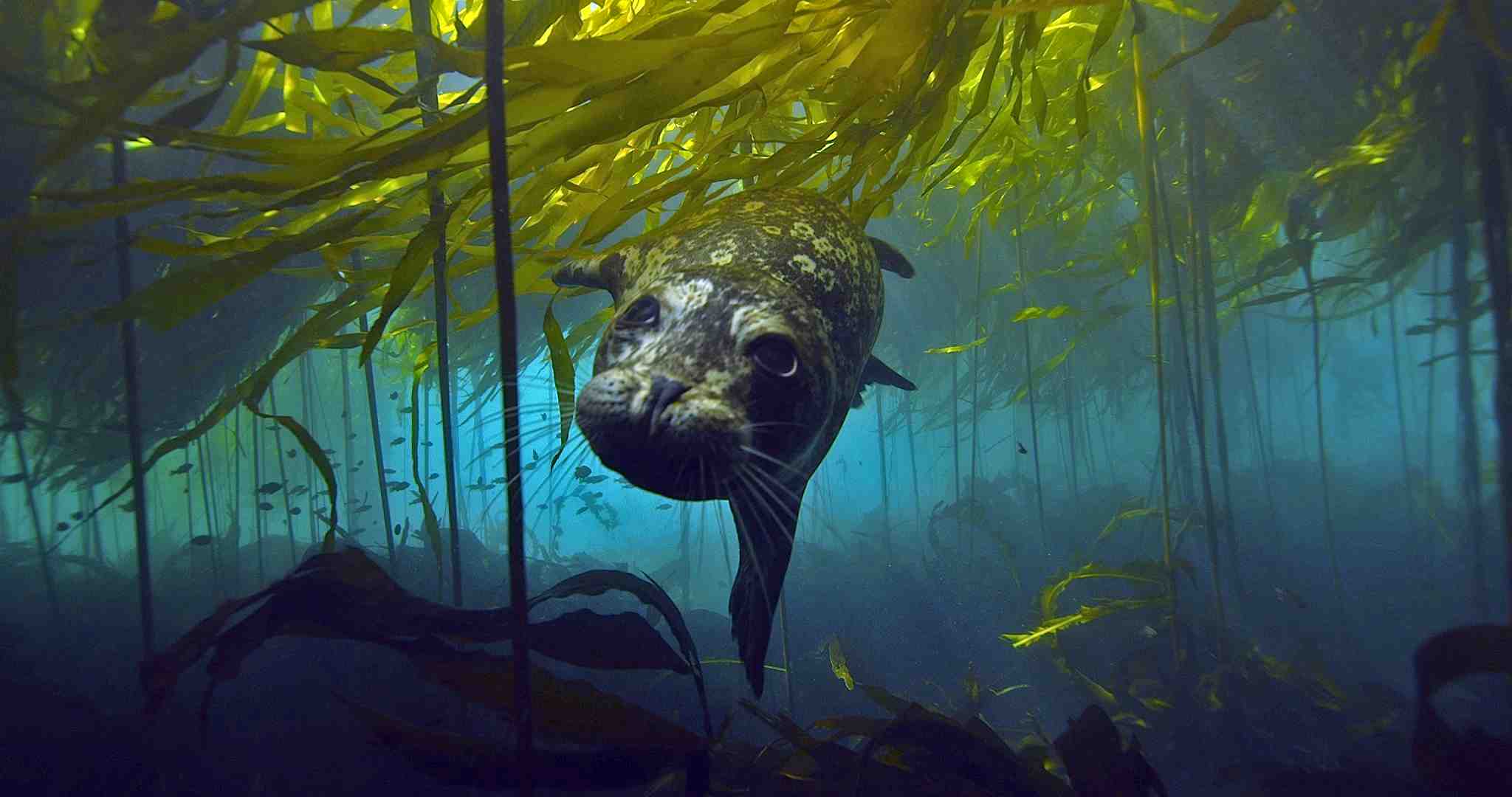
The Great Bear Sea is the ocean alongside the Great Bear Rainforest. A photo essay in Maclean’s magazine by renowned wilderness photographer Ian McAllister showcases its sublime marine beauty. The colours dazzle: orange sea pens, bat stars, purple stars, morning sun stars, crimson anemones, and vibrant fish like the Irish sea lord. Forests of kelp as tall as a ten-storey building wave in the water. And yet, without legal protection these incredible marine areas are vulnerable, exposed to risks from shipping, fishing, and other human activities.
Our new infographic “Protecting BC’s Coast” – with mapping and design from our excellent collaborators at Ecotrust Canada – lays out the different boundaries, zones, and sites under different jurisdictional authorities in the region in one, comprehensive map. Yes, it’s complicated, but it’s possible to increase protection for this unique ecosystem.
With this in mind, we were buoyed by the government’s commitment to ramp up Canada’s Marine Protected Area (MPA) network with an interim target of 5% of the ocean and coastal area by 2017, rising to protection of at least 10% by 2020.
Further, scientists note that the 10% target is a floor, not a ceiling. As the most recent scientific consensus put it, a 10% target should be viewed as “an important waypoint rather than the endpoint for ocean protection.”
So far we’ve protected only 1.3% of our territorial waters, quite a gap from our legal commitments. The Great Bear Sea is a perfect place to accelerate action, as so much work has been done there to identify candidate sites for MPAs, and to site them in comprehensive plans for the entire seascape.
Watch this video clip, Great Bear Sea Journey, to learn more about the area.
Like the Great Bear Rainforest, which enjoys a greater level of protection, the Great Bear Sea is a region of environmental wonder and diversity. There you can hear the plaintive mating call of the plain fin midshipman, or the haunting song of the humpback whale, a song shared by male humpbacks across the entire Pacific Ocean that changes uncannily from year to year. The Great Bear Sea’s humpback populations are gradually recovering from commercial whaling, and these and other cetacean populations need safe feeding and resting grounds.
The Sea has immense spiritual value. Most coastal First Nations view the killer whales that frequent these waters as chiefs of the undersea world, and have stories and myths about beings such as Low Tide Woman, a supernatural female being who controls the tides. The Sgaan Kinghlas - Bowie Seamount MPA, known to the Haida as the Supernatural Creature Looking Outwards is an underwater volcano about 180 km west of Haida Gwaii, and one of the few federally designated MPAs.
And the sea is an economic generator, as this study from UBC noted. Canada's ocean ecosystem health is critical to the country's maritime economy and the resilience of coastal communities. Yet more than ever we need to be actively protecting and managing these areas. "There's a huge range of new changes coming on. The ice is melting. Ocean acidification is happening. Water is warming up," says Professor Rashid Sumaila.
There are further signs that we can hope for federal action. We noted with enthusiasm Minister Tootoo’s speech about basing MPAs on science, and his commitment to hire new 135 DFO scientists. These actions should be favourably received in the scientific community, including the group of 19 ocean scientists who published Canada at a crossroad: The imperative for realigning ocean policy with ocean science in the journal Marine Policy a few months ago.
Now is the time to make progress on increasing the quantity and quality of MPAs here in BC, and achieving protection for the Great Bear Sea. WCEL has submitted a brief as part of the House of Commons Standing Committee on Environment Sustainable Development’s ongoing discussion of federal protected areas and conservation objectives. Our brief highlights two issues: the legislative changes necessary to expand and strengthen marine protection in Canada, and the opportunity to build on existing MPA work in BC.
First, law is an incredibly important tool for MPAs, just as it is for parks on land. Canada’s legal system for MPAs could use revitalization to accelerate MPA network completion. We have a lot to learn from progress made by other countries on MPAs, many of whom have used a new MPA law as a springboard for change, as this companion blog notes.
Legal changes we recommend include amending Canada’s marine protection legislation to: allow better coordination between agencies, incorporate indigenous co-management and governance obligations, embed conservation objectives directly into the law, and mandate minimum levels of protection for conservation areas based on international standards.
Second, the federal government needs to re-engage with the Marine Planning Partnership (MaPP) in BC’s Central and North Coast, and capitalize on its detailed zoning and planning work for the Great Bear Sea. Comprehensive marine spatial plans prepared by MaPP in a process co-led by the province of BC and 18 First Nations, and approved in a historic deal reached last April, embed Protection Management Zones (PMZs) throughout the region. Now it’s time to secure lasting protection for these carefully agreed upon zones.
Together, these changes will help Canada expand the reach of its marine protection legislation, while strengthening the protections it offers, as a legacy for the future. Canada’s marine waters contain some of the most remarkable ecosystems in the world. We need to make sure that the future of areas like the Great Bear Sea is secure, with expansive and robust legal protection.
By Linda Nowlan, Staff Counsel